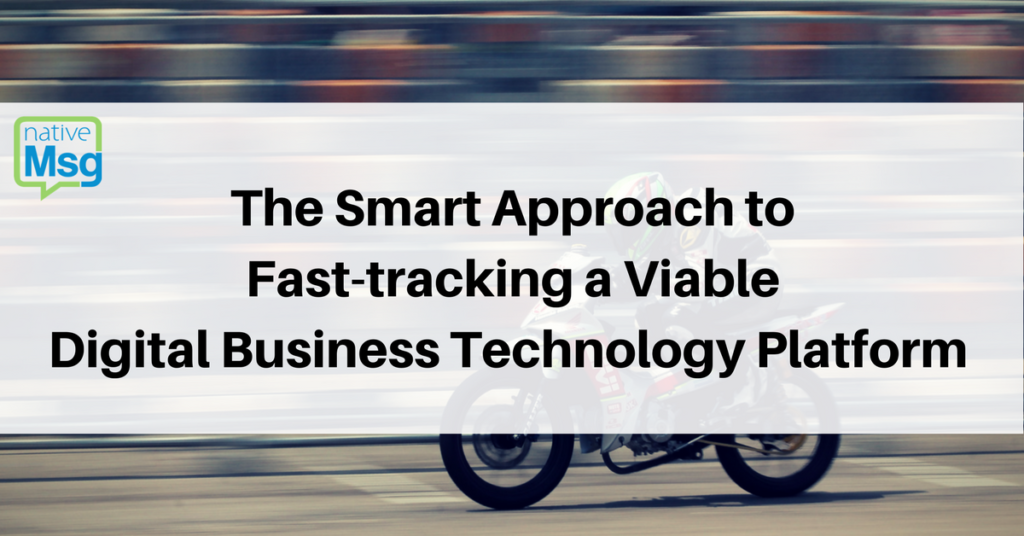
Imagine for a moment that every platform in your business ecosystem could be accessed simply and company-wide through a conversational interface. What if all you had to do to gain access to every area of your business was to text or ask a question? Think about the level of efficiency and ease. From one point, you could easily access legacy system information as well as make system updates directly within this centralized conversational point.
This “zephyr” of simple connectivity may be the key to taming the unruly dilemma businesses face when attempting to assemble a digital business technology platform.
Per PWC, first adopters are positioned to outpace competition. Moreover, it presents a cost reduction in every industry per the survey.
- According to Gartner, a digital business technology platform is imperative to scaling a digital business.
- Businesses stand to profit. Per the PCW Industry-4.0 Building the Digital Enterprise Report , “All told, our survey respondents expect to see $421bn in cost reductions and $493bn in increased annual revenues…for the next five years. “
- McKinsey reports that a shift to a digital platform inevitably results in a positive financial stream.
If you’re inclined to dismiss conversational AI as an unrealistic or improbable solution, think again about the underlying goal of interoperability. Read on to understand how conversational AI isn’t just a piece of the ecosystem, but a tool that stands to transform a legacy business into a competitive digital platform.
In 2018, What is a Digital Business Tech Platform?
More and more, businesses are scrambling for a comprehensive digital business technology platform. The move toward this model isn’t new. In the last decade, digital businesses facilitated the possibility for enterprise businesses to stake new terrain in the digital ecosystem.
In 2018, the structural requirements are diverse, and pre-existing structures and systems can make the evolution an immense challenge.. What that means for legacy businesses is that a successful operating structure generally includes these five components, per Gartner:
- I.S. Platform
- Customer Experience Platform
- Data and Analytics Platform
- IoT Platform
- Ecosystems Platform
Gartner advises that services linked together can create “applications, apps and workflows.” Though AI is a dominant focus as a disruptor, it tends to be couched within the scope of I.T. But conversational AI is in fact an ideal way to connect, operate and build across platforms.
Building a Digital Business Tech Platform: A Viable Starting Point
The typical challenge for many businesses is two fold: Legacy companies want to compete with digital business younglings (in comparison), but must make major infrastructure changes to do so. Secondly, new businesses, as well as established ones, must decide whether to build an interconnected system or toy with a one-size fits all solution that doesn’t really meet the needs of specific businesses and industry.
A digital business technology platform should enable your business to run customer facing and company wide systems that offer responsiveness, collaboration, ease of access, and continue to do so securely. It’s a tall order.
Conversational UI, backed by a powerful AI architecture, can simplify experience so that all business operations function by logging into one point. Users can begin by asking a question or delivering an instruction, either by voice or text, and continue working within a GUI setting.
Conversational AI is a multi-functional tool that can connect backend systems to frontend systems successfully.
To begin creating better engagement and experience, learn more about the benefits and helpful use-case examples of voice assistants for both B2B and B2C businesses.
Conversational AI: Changing the Digital Ecosystem Ethos
Chatbot platforms and conversational AI are not subsidiary components to advancing a digital business technology platform; these can be the key to solidifying the ecosystem into one very user-friendly, responsive control center for every area of your digital business work-flow. Today, it’s possible to begin to build-out an AI-driven foundation that encompasses every area your business relies upon to function:
Collaboration Tools and Project Management

Chatbots can integrate within both collaboration and scheduling tools to keep every team member in the communication loop and to create easier visibility in project development, communication scheduling and travel.
IT Systems: Access, Updates and Diagnostics
Let’s face it, chatbots are faster, and with proper data training, create more accurate responses. Conversational AI can act as an additional IT professional, monitoring systems, alerting your team and responding to diagnostic queries.
Analytics: Analytics and Real-time Data for Every Business Area
Conversational analytics is a trending product in the marketplace. Conversational AI offers you the ability to build and to customize an effective analytics tools for every facet of your business:
- IT diagnostics
- Employee engagement
- Customer engagement across sites, social and in micro-moments with your product
- Customer support
- Logistics and manufacturing
- Cost analysis and finance
IoT: Connections to Real-world Devices
Where would you need to integrate conversational AI, either within your workplace devices or within products (or both) for more ease? Go-to solutions like a smart-system, within every conference room that’s connected to applications and devices, like scheduling, printing and video conferencing, via conversational AI, is a feasible start.
Accounting and Finance
In personal banking, institutions have neatly integrated chatbots within automated services so consumers can glean information, securely. Bank balances, transfers and even lending requests are all fielded with conversational AI. For corporate accounting, conversational AI can interface with legacy systems for more mundane and administrative tasks.
How to Begin Creating a Digital Business Technology Platform with Conversational AI
This isn’t a comprehensive guide for designing AI architecture. Rather, this is a sound approach any organization can use to begin to create a cutting edge digital platform that is also fluid enough to update–to fit your business goals and operability.
- Begin with Supporting Data: Businesses must understand the full functionality of technology, its limitations and where it’s headed. Making such monumental shifts requires the resources to do so. But a grounded understanding of every possible model available now within the digital platform ecosystem is primary.
- Create Operational KPIs: Clarify operational KPIs that are accessible and moderated by measurability.
- Audit Against KPIs: Audit company-wide work flows to discern how current systems support KPIs.
- Choose an AI Infrastructure: One tenet to consider is that full ownership creates healthy agency. It may be daunting to consider creating an internal AI architecture by partnering with a third-party. But the benefits are many:
- A customized architecture that connects every system can work on third party platforms for familiar interfacing and ease. It can be created to grow with your business and needs in the long-run.
- Instead of lassoing data into “daisy-chained” systems that overlap, an AI-driven architecture includes all the data sets across all business areas within its network. Creating a proprietary architecture isn’t essential at first, but brands can begin with cloud-based architecture, software and apps to work toward interoperability for the long-term.
AI Architecture is the Next Right Step
You can start by integrating a chatbot or voice assistant into customer-facing platforms, like customer support. (For examples on how to get going, check out this post!) Starting here will increase customer engagement and enhance experience for both customers and employees. Down the road, connecting all company systems with a conversational interface, powered by machine learning, is a feasible option to fast-track any enterprise toward a wholly digital platform.
In less than 30 years, technology made many areas of music recording and distribution, devices and phone systems obsolete. Conversational AI is on track to work similarly within business operations. But because the impact stands to be immense, it’s important to structure this architecture ethically, with transparency and so that technology supports human capital and productivity.
Want to learn more about how a conversational site or component can create huge engagement, easier lead-building and better brand experience? Get in touch with nativeMsg for a consultation.

